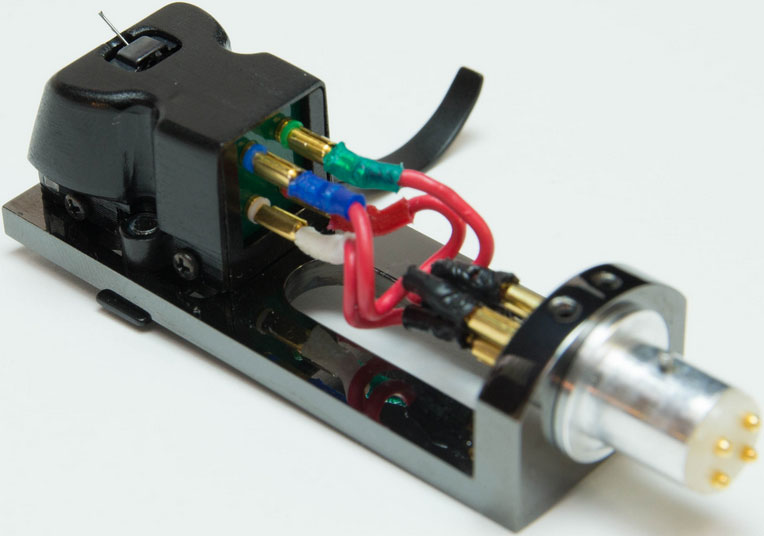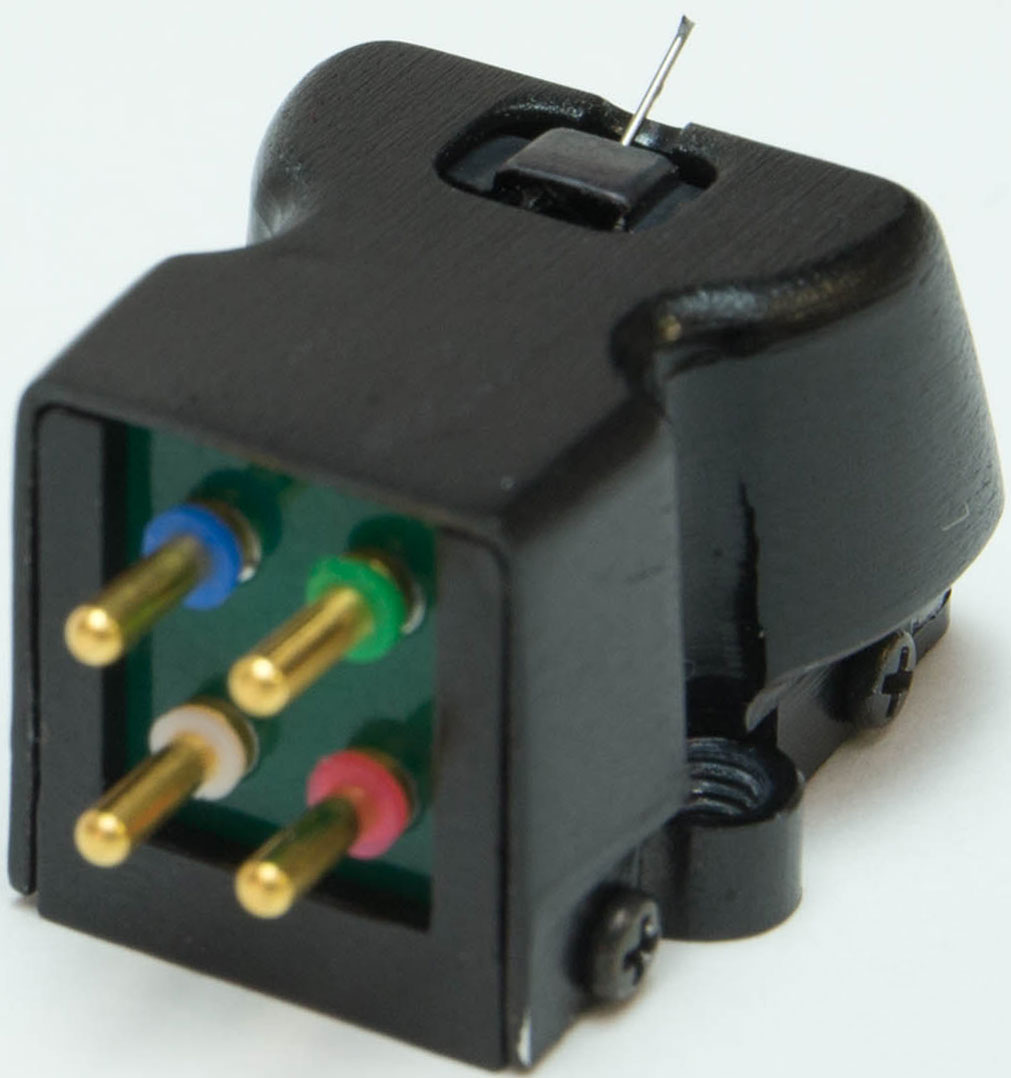The Review System
I replaced the Soundsmith strain gauge system with the DS-W1 system. The cartridge was mounted on my AMG 12-inch tonearm, and the LPs were spinning on my AMG V12 Veilla turntable. The rest of the system consisted of my Teresonic Ingenium XR-Silver speakers driven by the Pass Labs XA30.8. The volume and switching in my system are handled by the Emia Silver Remote Autoformer. All of the cables and power cords are High Fidelity Cables, Ultimate Reference. The power cables are plugged into the wonderful HB Cable Design PowerSlave Marble.
All cartridges need to be set up correctly to sound their best; that seems obvious. The point should be made that some phono cartridges are more particular about how they are set up than others. For example, some phono cartridges have a conical stylus, some an elliptical, some a Shibata and even an optimized line contact. As you move up that list of stylus types, set up has to be much more particular. When it comes to a cartridge with a Shibata stylus, and that reads displacement instead of vibrations, properly setting it up is critical. In a displacement reading cartridge, the set up of the azimuth and anti-skating is particularly important. One other thing about a displacement reading cartridge with a Shibata or a line contact stylus is that it is very important to keep the stylus clean. It will sound slightly tizzy if it’s not clean. Don’t be fanatical about it, but if you hear something not sounding right give it a good cleaning, and you will be well rewarded.
The good news is that any dealer who sells you this cartridge should be able to set it up correctly for you. If you are going to have it shipped to you, the news is still good. Cartridge setup is not nearly as mystical as people make it out. I suggest you get Michael Framer’s DVD on setting up a turntable.
The other good news is that the DS is an easy cartridge to set up. The front is flat and square, the stylus and diamond are very easy to see and place on a protractor. It probably took me less time to setup the DS than any cartridge I have used in a long time. It turns out that everything I was told by the importer about setting up the cartridge was spot on. It tracked and sounded best with a vertical tracking force of 1.45 grams; it sounded best with the cartridge body level to the LP, and the azimuth of the stylus was right on.
One last thing, the cartridge tracks wonderfully in a medium mass tonearm, but when I tried it in a high mass arm, I found it just didn’t work as well. I was told to expect this by Garth at Musical Surrounding, so again, everything I was told about setting up the DS was just as they said.
After a few weeks with the DS, I knew I had to talk about something with the DS that I had never talked about in a review before. This is one of the first reviews I have done since I started using the Audio Reference Technology Room Tuning Cones. As I mentioned in the review, they allowed me to have tone controls that weren’t in the signal path. They also have the ability to effect the size of the soundstage. Ted Denney, of Synergistic Research, has been demonstrating to us for years how sympathetic vibrations affect the soundstage. For the review, I started by leaving all my cones where they had been in my system.
One of the things I noticed about the DS was it had incredible depth, but not quite as wide a soundstage as I was used to. I’ll talk about that later, but what is significant is I found I could tailor that soundstage with where I placed the ART tuning cones. By moving the tuning cones that were on each back corner of my doublewide rack’s top shelve to the corners behind my speakers, I could significantly widen the soundstage. They were placed there to help stabilize the center image in my system. Moving them came at the expense of losing a little bit of stability in the center of the soundstage. So I put them back and got out six more cones and put three in each corner behind the speakers. With this setup, I was simply blown away with everything about the soundstage of my system. Truth is, with this setup I was pretty much blown away by the entirety of the sound of my system with the DS playing the records.
I know that many of you who are reading this don’t have the turning cones, but this still makes an important point about the ability of a system to produce a good soundstage and great sound. That point is that the tuning of the room can have a bigger effect than the active components in your system do. Another point is that if you have a finely tuned system then changing any component will probably require you to fine tune the room again.
The EQ/Power Supply Unit
This little unit looked and felt like a small but well-built high-end audio component. It was surprisingly heavy for its size. It used very high-quality chassis mount RCA connectors. None of those connectors were mounted on the circuit board with holes cut out in the chassis to connect through. This is very important if you use High Fidelity Cables or other high-end cables that fit tight and have substantial connectors. The chassis is very stable, with nice thick walls and nice brass feet and footers. I’ve already shared with you the care that went into the inside of this unit with its discrete state-of-the-art technology.
The only control on the unit is the power switch on the front panel. On the back, there is one pair of single-ended inputs and two sets of single ended outputs. As I have already mentioned there are two output choices; the first pair is only marked as “Out” the second a pair is marked as “RIAA.” This nomenclature may be a little confusing. As I explained earlier according to Garth Leerer, the first pair doesn’t start to roll the bass off until the low 30Hz region. With the units being sold now, the RIAA output uses the 50.5Hz bass equalization of the RIAA curve. This is significant because all modern recordings use this equalization. The RIAA equalization is a form of pre-emphasis on recording and de-emphasis on playback.
The DS system sounded great in either mode, but I preferred it when using the “RIAA.” The wow factor of the bass was fun from the first set of outputs, but I found the second set of outputs to have better PRaT (Pace Rhythm and Timing); voices were fuller, and the bass had more rhythm. The midrange seemed slightly more alive, and there seemed to be slightly more information. The rest of the review was done through the “RIAA Out” outputs. I will occasionally point out where there was major difference in the two outputs. By the way, Garth said this was a somewhat new addition to the box; it’s a good one, one I wish the Soundsmith strain gauge had. Stay tuned for part two about how my system sounded with the DS-W1 Optical Cartridge.
Read: Part Two
Copy editor: Laurence A. Borden
- ← Previous page
- (Page 2 of 2)


